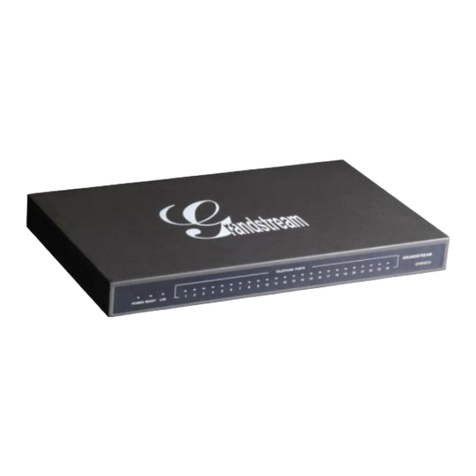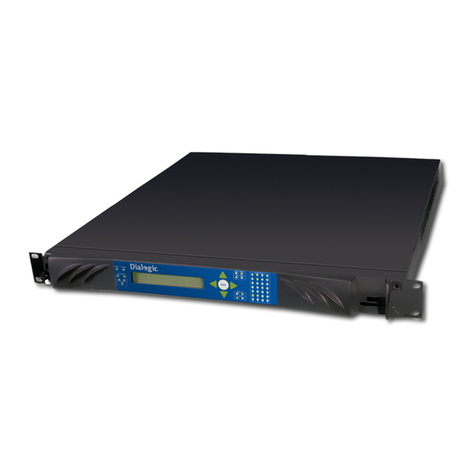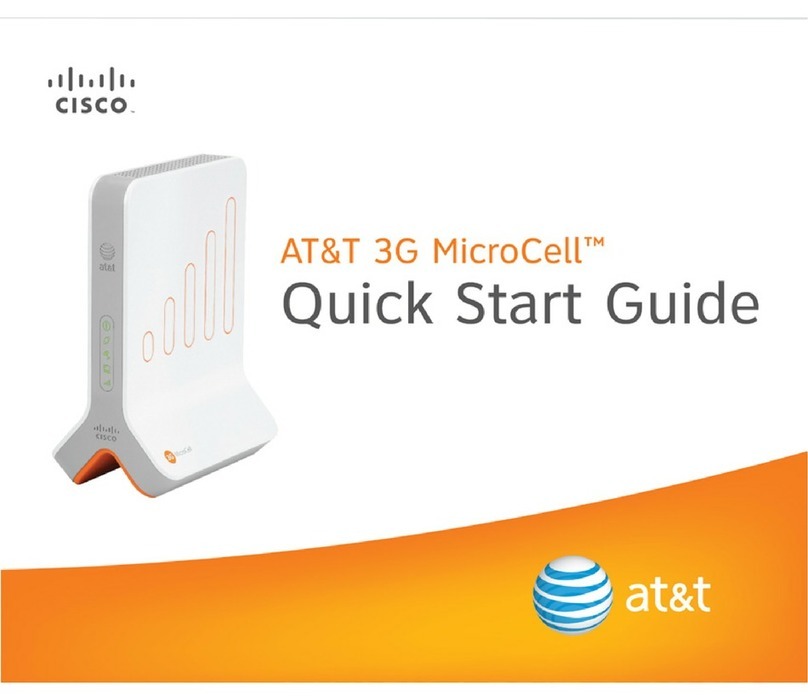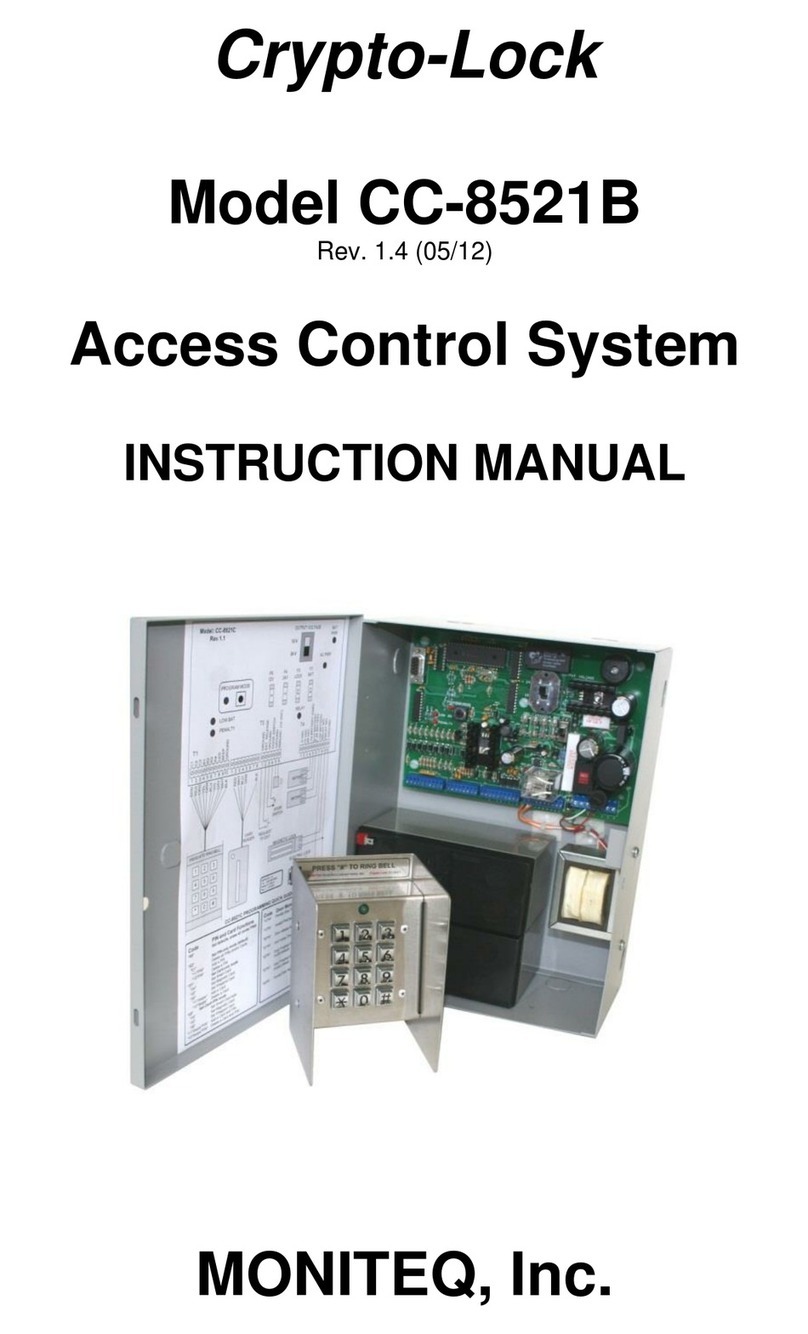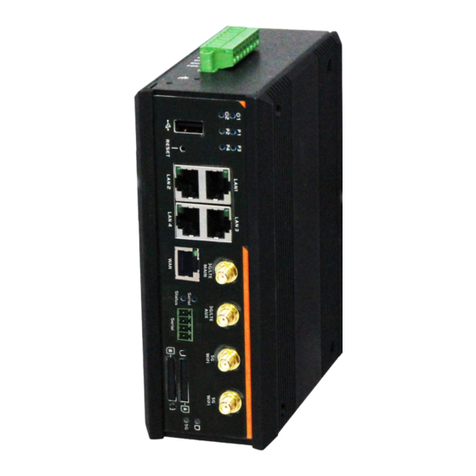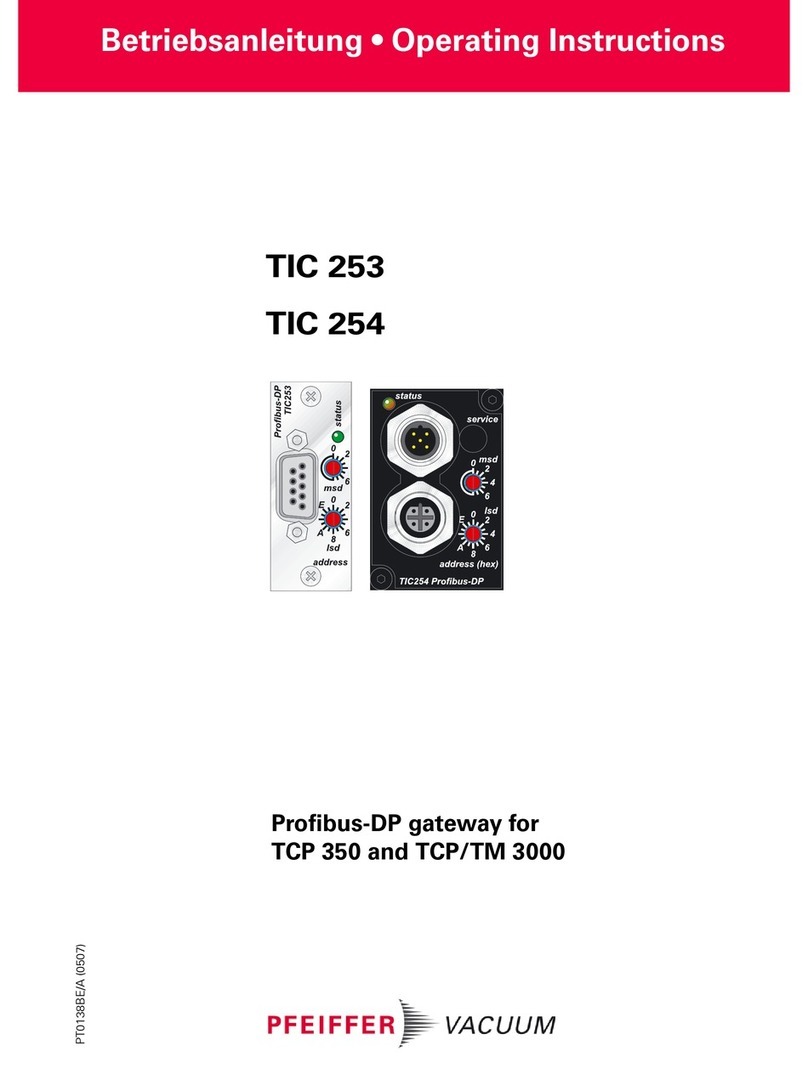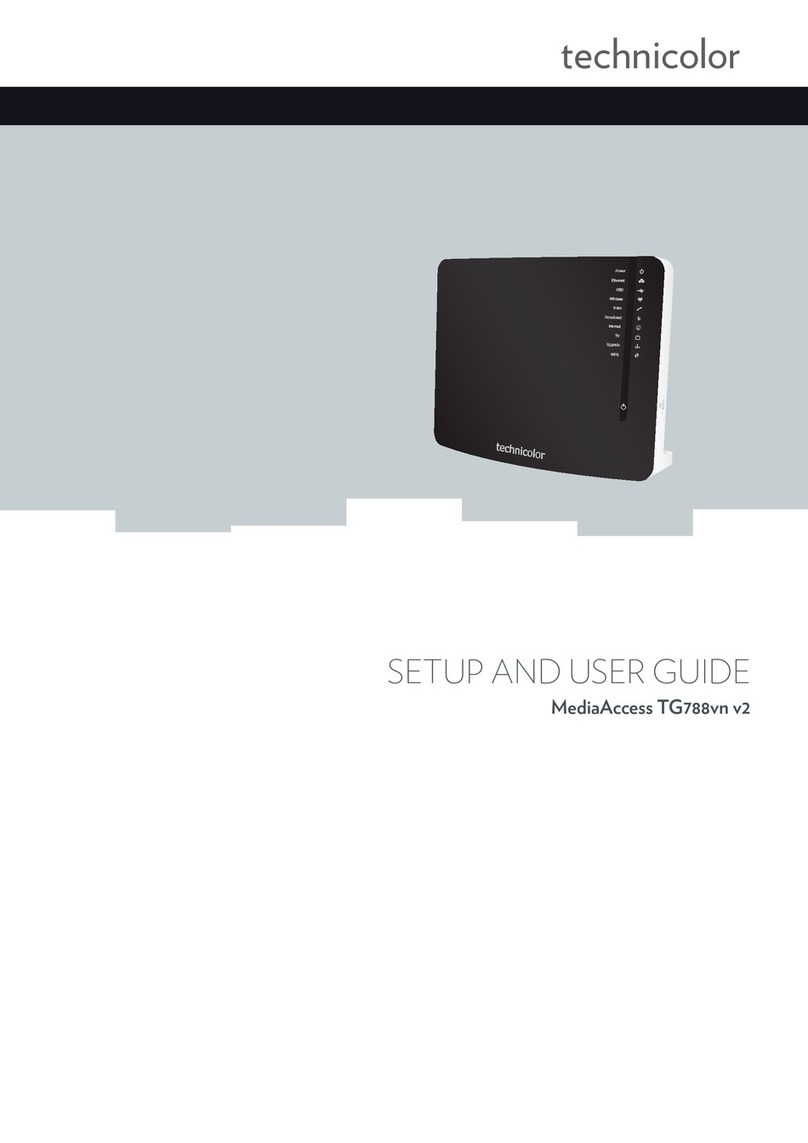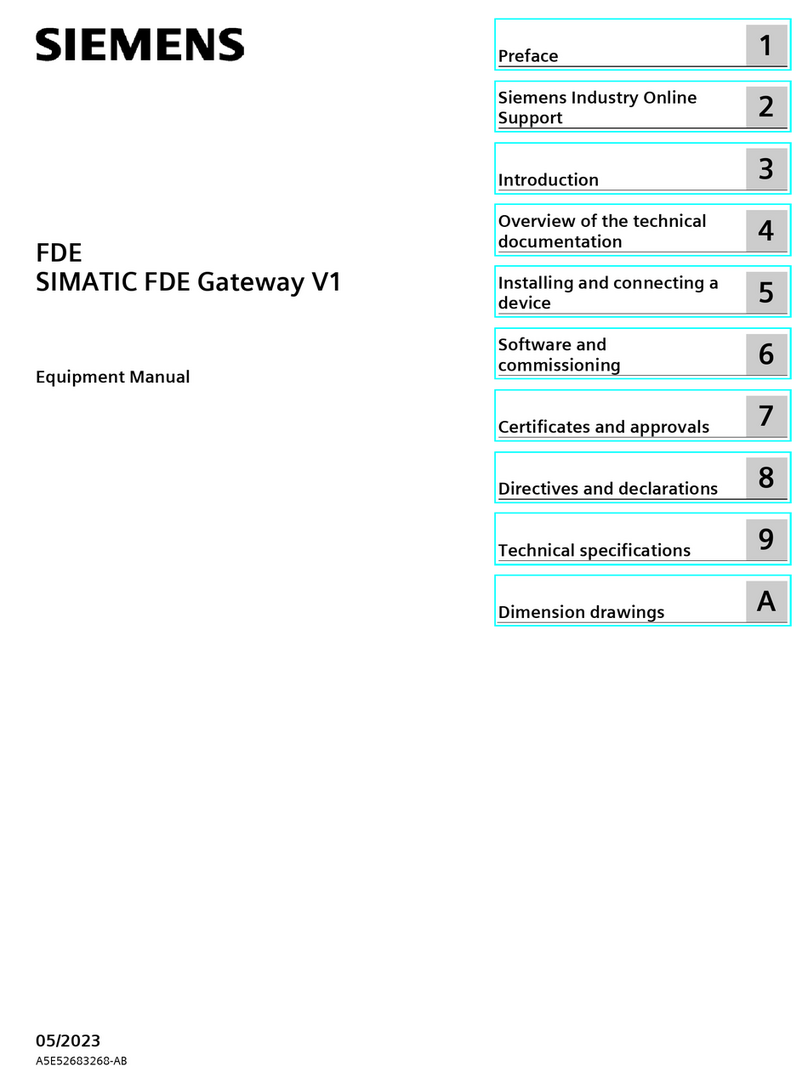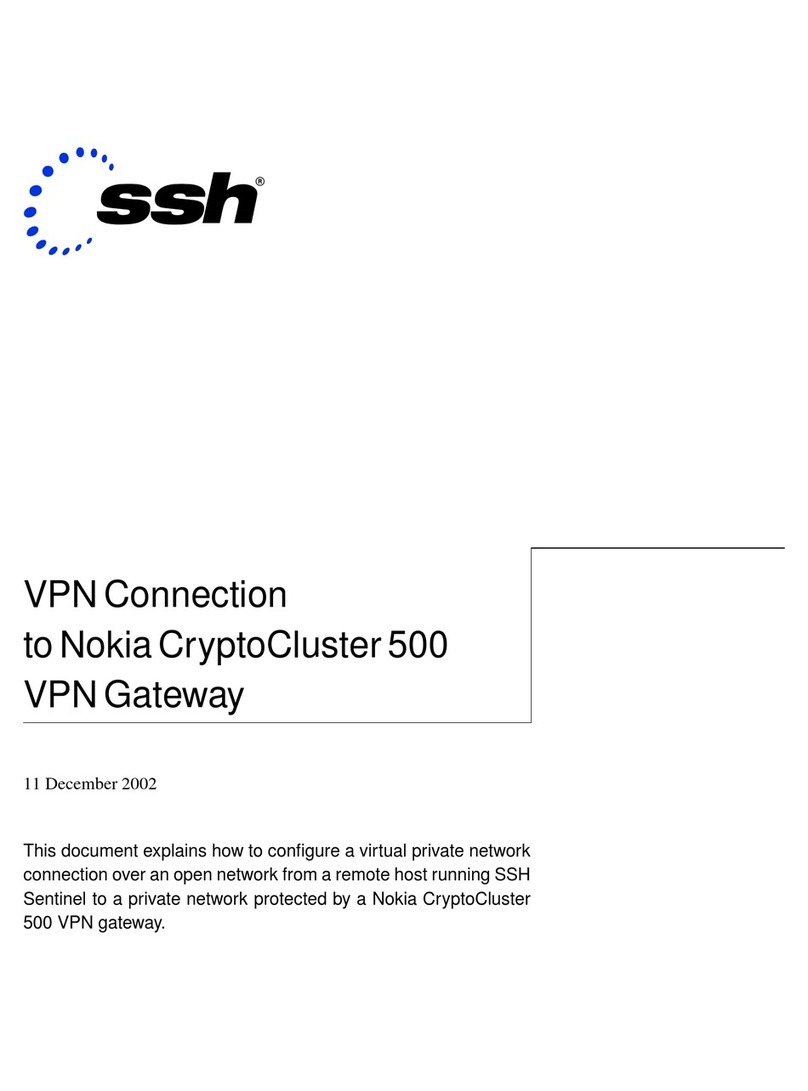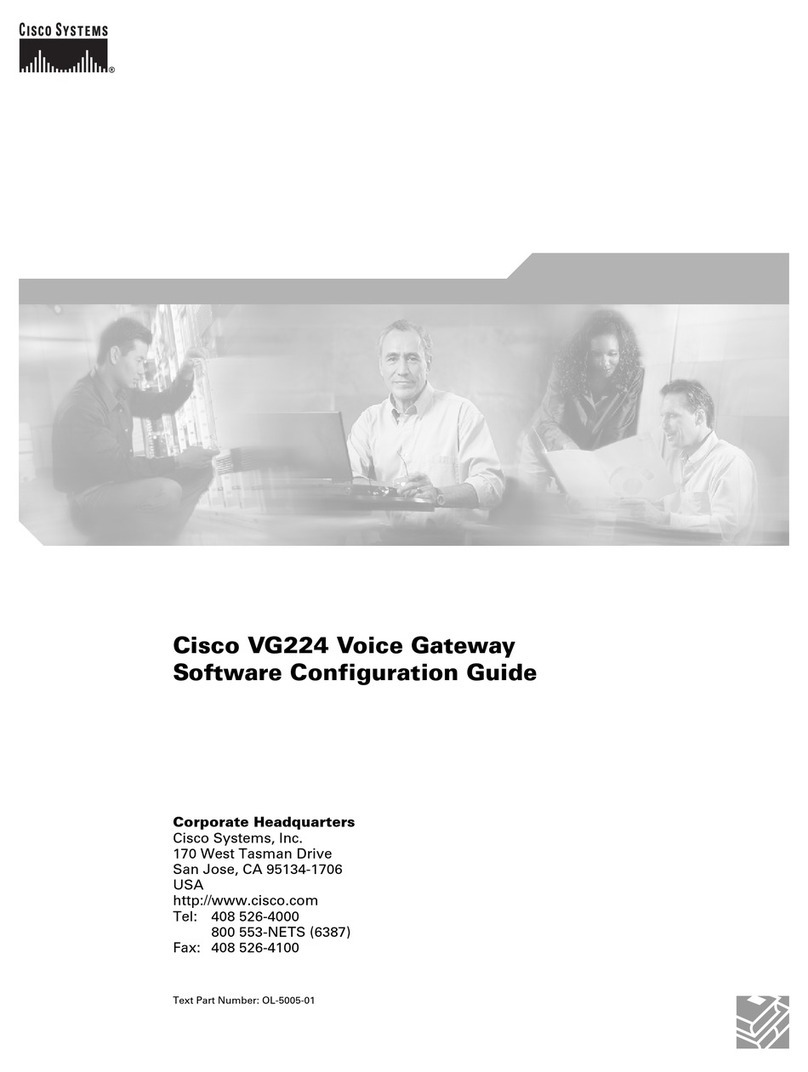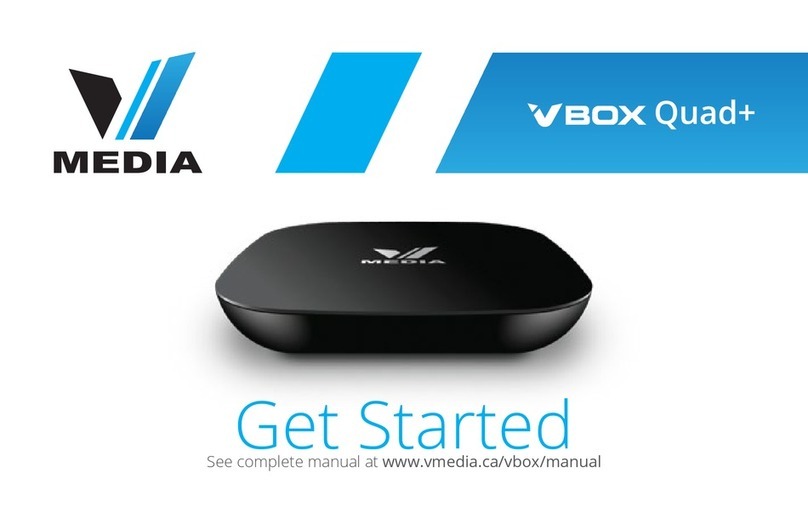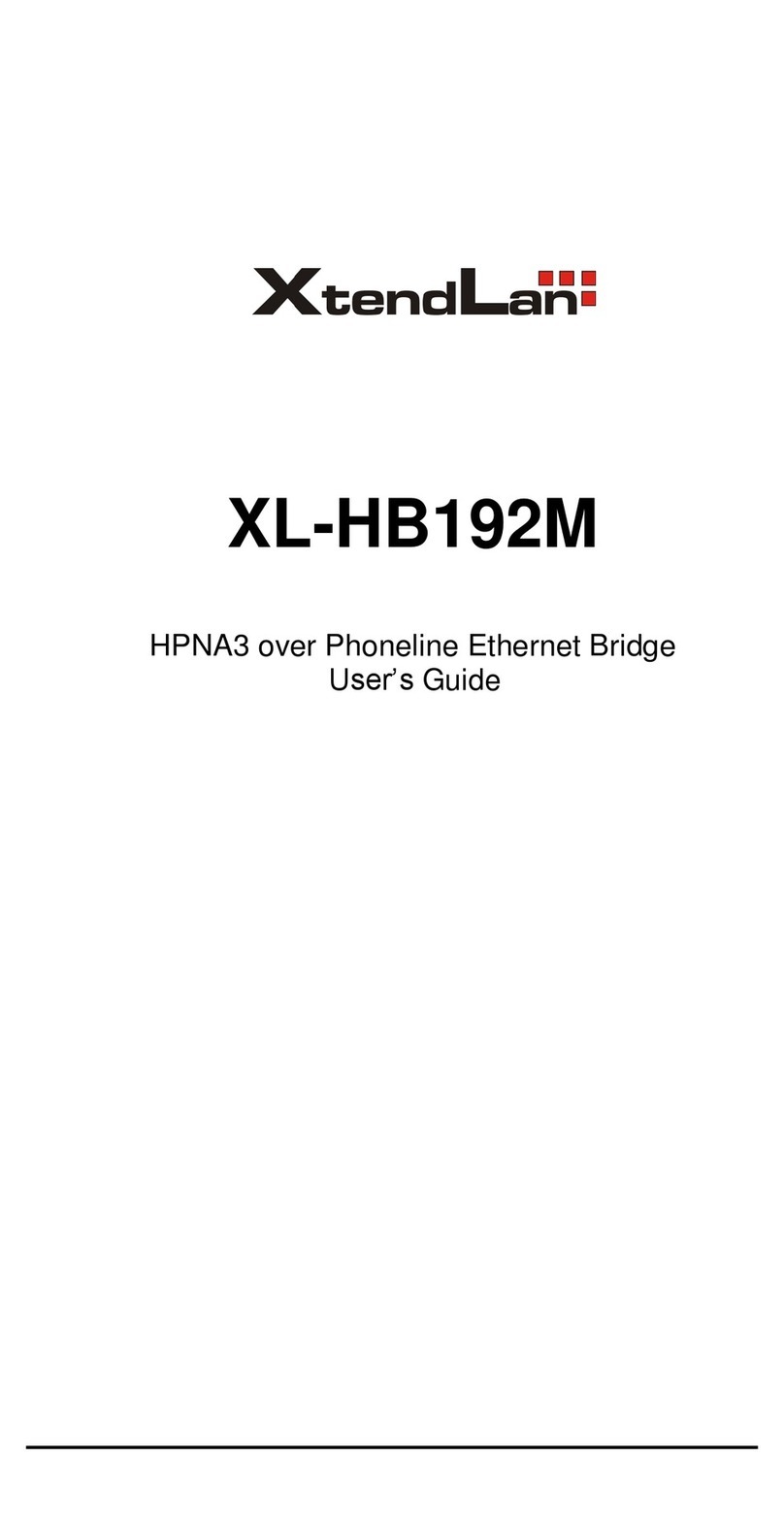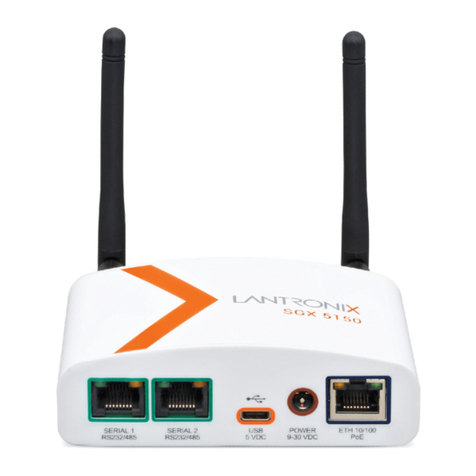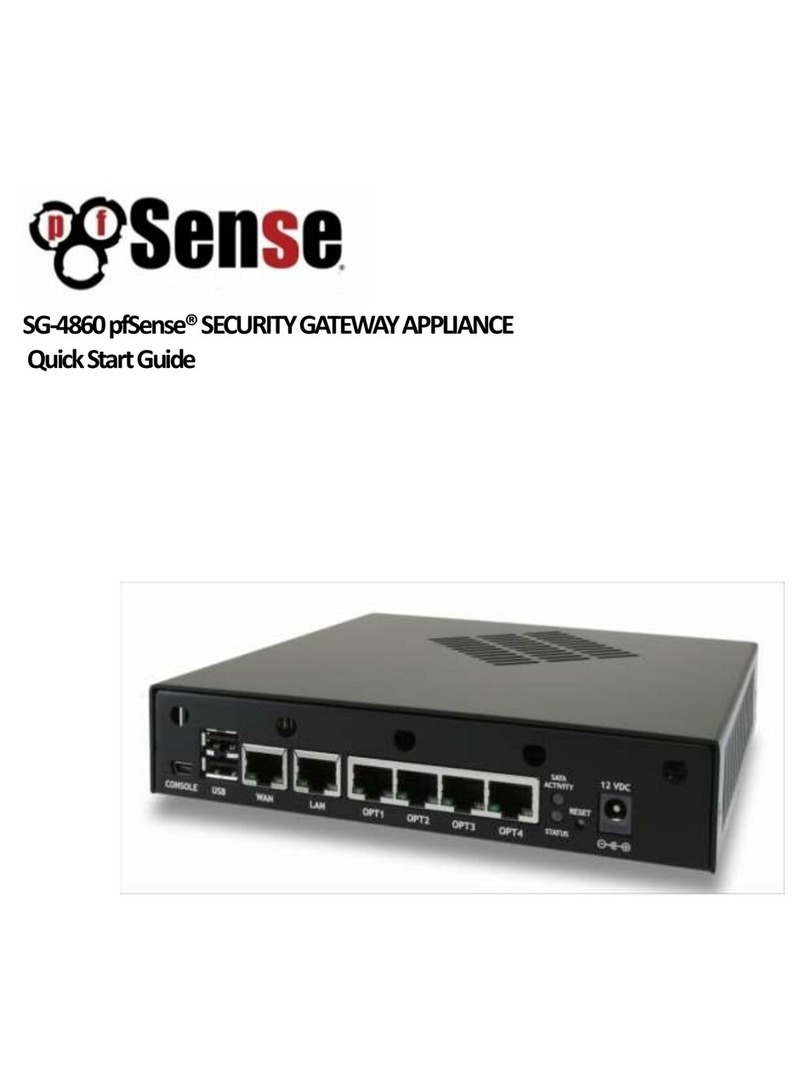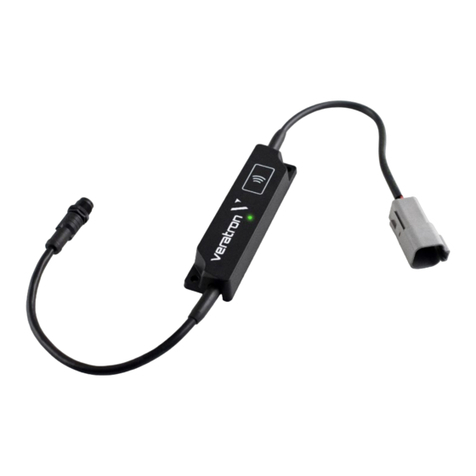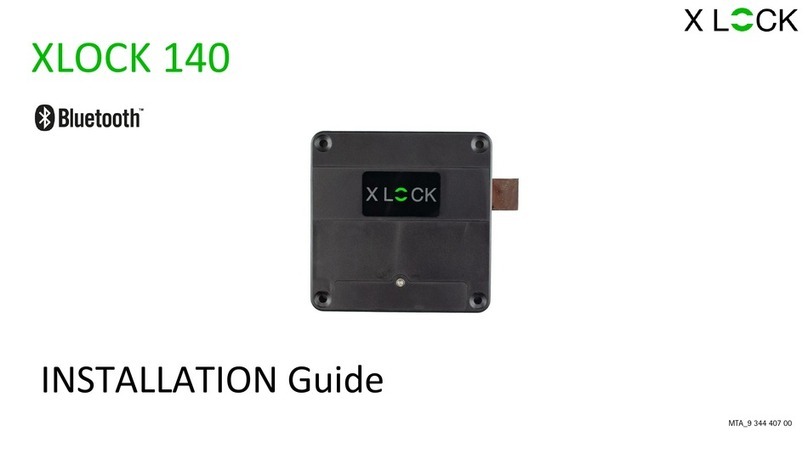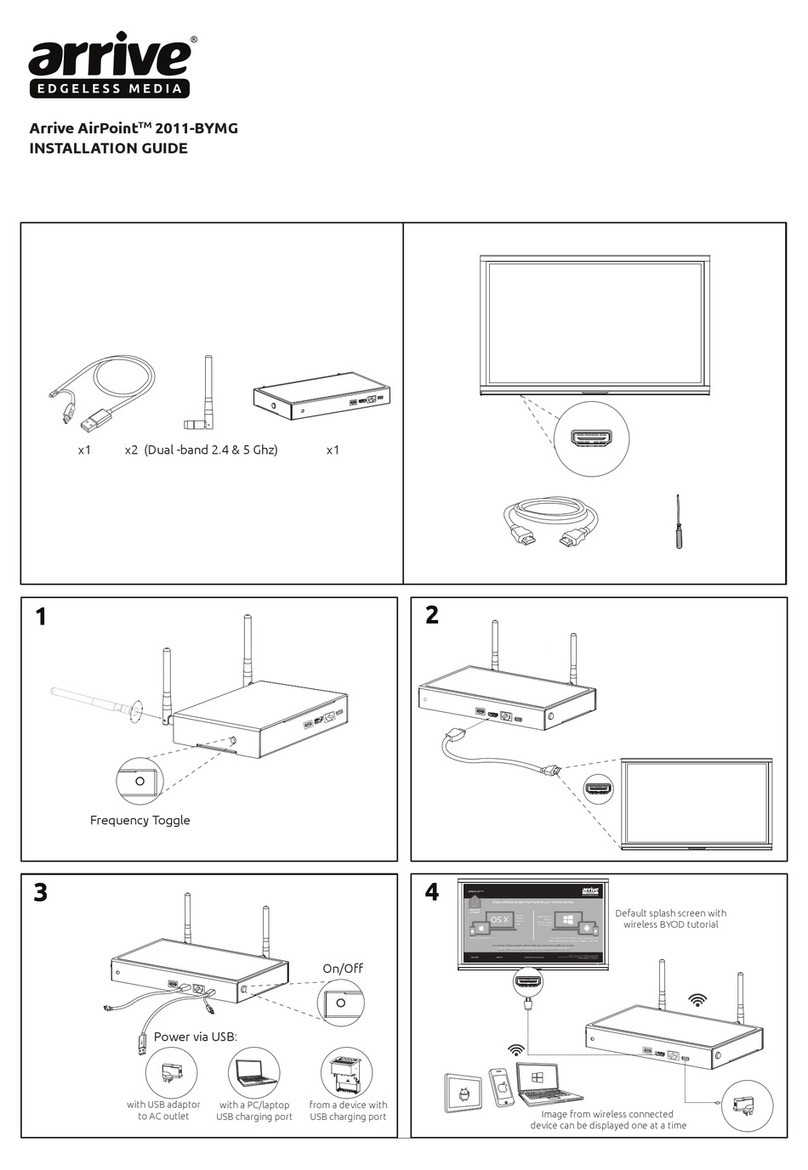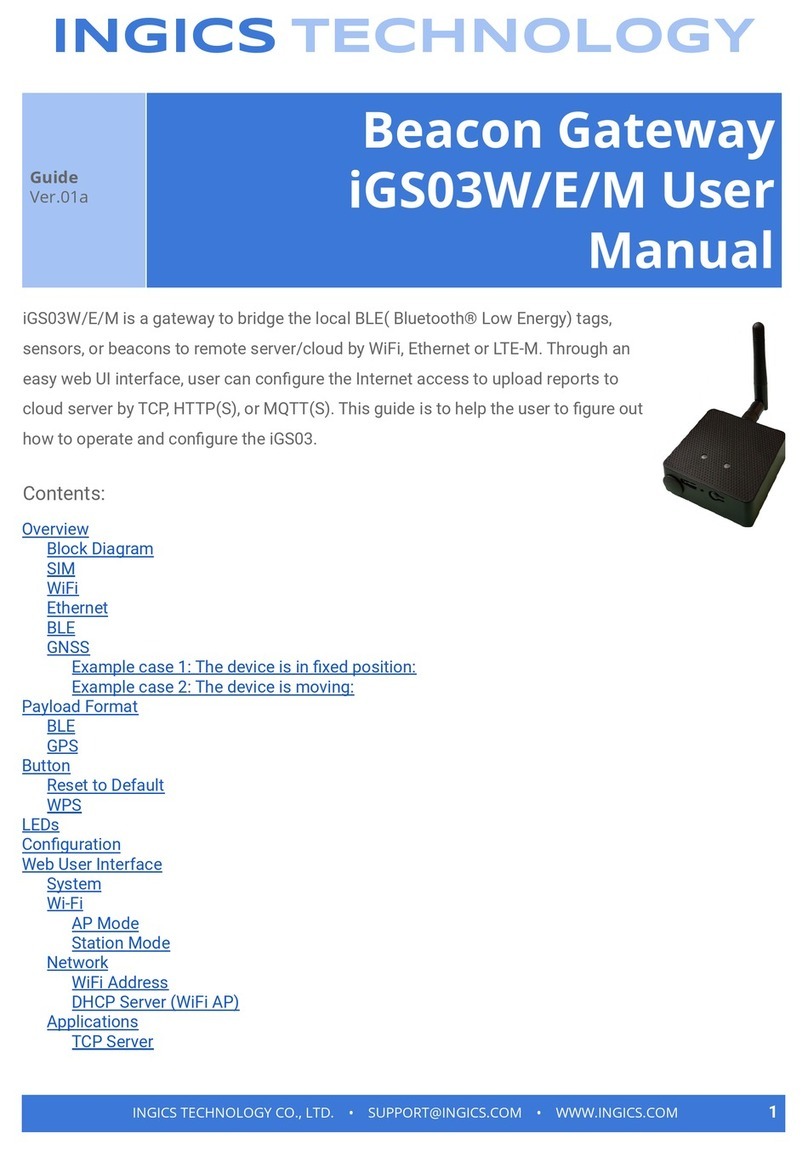ENCARDIO RITE RITE GEOSYSTEMS EWG-01 User manual

USERS MANUAL
MINING
BRIDGES
METRO & RAIL
STRUCTURAL
CONSTRUCTION
HYDROELECTRIC
TUNNELS
Doc. # WI 6002.117 Rev. 03 | July 2023
Encardio-Rite Electronics Pvt. Ltd. A-7, Industrial Estate, Talkatora Road, Lucknow, UP-226011, India | geotech@encardio.com | www.encardio.com
Encardio-Rite Group -
India | Bhutan | Bahrain | Qatar | Saudi Arabia | UAE | Peru | Greece | Spain | UK | USA
WIRELESS GATEWAY

www.encardio.com
1INTRODUCTION 1
1.1 Wireless network 1
1.2 Conventions used in this manual 1
1.3 How to use this manual 1
2GENERAL DESCRIPTION 2
2.1 Gateway 2
2.2 System components 2
3TECHNICAL SPECIFICATION 3
4PRE-INSTALLATION PREPARATIONS 4
4.1 Pre-installation checks 4
4.2 Selecting location for Gateway 4
4.3 Setting up the Gateway & Nodes 4
5CONFIGURING GATEWAY 5
5.1 Gateway setup 5
5.2 Connecting to phone through Bluetooth 6
5.3 Config Gateway 7
6DATA FORMAT 11
6.1 Upload data 11
6.2 Download data 11
6.3 SD card data 11
7INSTALLATION PROCEDURE 13
7.1 Wall mounting 13
7.2 Mast mounting 13
8TROUBLESHOOTING 15
9SAFETY AND WARNING 16
9.1 Operation Safety 16
9.2 Battery caution & warning 16

Users’ Manual EWG-01 Wireless Gateway
Page | 1
1 INTRODUCTION
1.1 Wireless network
Wireless sensors are vital in monitoring construction sites, large structures and landslide areas. They are
extensively used in applications where geotechnical and other sensors are used for data collection and
transfer it to a central server for access by multiple users. Encardio-rite offers an innovative network
solution that allows real-time monitoring of geotechnical and structural sensors in challenging conditions
with reliable data transfer without any delay.
In Encardio-rite's comprehensive wireless monitoring system, the sensors are seamlessly integrated into
a long-range, low-power radio frequency (RF) network via suitable nodes, connecting them to a gateway.
This efficient setup allows the sensors to transmit recorded data to the gateway via the RF network with
utmost reliability. Subsequently, the gateway effortlessly uploads the collected data from the sensors to a
central or cloud server.
The system operates on ISM sub 1 GHz operating frequency bands adjustable to requirement of each
territory. The system can be adjusted to different frequency bands; for example: .
India 865 – 867 MHz
Europe 868 MHz
USA/Canada/Singapore/Australia 915 MHz
A detailed reference for frequency bands allowed in different Countries is available at:
https://www.thethingsnetwork.org/docs/lorawan/frequencies-b-coyuntry.html
1.2 Conventions used in this manual
WARNING! Warning messages calls attention to a procedure or practice that if not properly followed could
possibly cause personal injury.
CAUTION: Caution messages calls attention to a procedure or practice, that if not properly followed may
result in loss of data or damage to equipment.
NOTE: Note contains important information and is set off from the regular text to draw the users’
attention.
1.3 How to use this manual
This users’ manual is intended to provide you with sufficient information for making optimum use of
Gateways in your applications.
To make the manual more useful we invite valuable comments and suggestions regarding any additions
or enhancements. We also request to please let us know of any errors that are found while going through
the manual.
NOTE: Installation personnel must have a background of good installation practices and knowledge
of fundamentals of geotechnics. Novices may find it very difficult to carry on installation work.
The intricacies involved in installation are such that even if a single essential but apparently
minor requirement is ignored or overlooked, the most reliable of instruments will be rendered
useless.

Users’ Manual EWG-01 Wireless Gateway
Page | 2
2 GENERAL DESCRIPTION
2.1 Gateway
The Encardio-rite model EWG-01 wireless Gateway is used as a main networking hardware, which uploads
data gathered from all the geotechnical sensors connected to suitable nodes, to the remote server.
The gateway enabled with wireless network provides reliable data transfer over long distances, without
any delay. It is a rugged outdoor unit (IP66) specifically designed for long-term monitoring in harsh
environments. By enabling continuous data logging and real-time monitoring, it plays a crucial role in
providing early warnings for potential failures, allowing ample time for corrective actions or even safe
evacuation if required.
One of the notable advantages of the wireless system is its ability to eliminate the need for extensive cable
installations. This proves particularly beneficial in areas where sensors are spread over a wide
geographical range, making cable routing both challenging and risky. Additionally, stakeholders have
round-the-clock access to the collected data, ensuring constant availability and collaboration.
Furthermore, through the implementation of our cloud-hosted data management and configuration
software, the system can be tailored to automatically generate reports and trigger alerts via SMS or email
whenever readings surpass pre-defined alert thresholds. This intelligent automation streamlines operations
and enhances responsiveness.
Gateway features
Design, configuration and supervision of entire wireless sensor network.
Data collection from various sensors in the network.
Synchronise the clock of whole network.
Remote access of the nodes through appointment.
Processing of collected data to remote FTP server through cellular network.
2.2 System components
Provided by Encardio-rite
Gateway (EWG-01) with RF antenna and cellular antenna
Mounting accessories for installation on wall or pole (as ordered), consisting of installation plate, ,
fasteners and brackets and bracket to install antenna
RS-232 Bluetooth modem/USB to RS-232 FTDI cable
Application software for Android Smartphone
Application software for Windows
To be arranged by Client
Laptop or Android Smartphone
Activated data SIM card - 1 no.
D-Cell Li-SOCl2 3.6 V 14 Ah batteries (Non Rechargeable) – 2 no.
Power supply unit 9-30 V, 1 A (12 V, 1 A power supply easily available can be used) – 1 no.
Tools required for mounting the device

Users’ Manual EWG-01 Wireless Gateway
Page | 3
3 TECHNICAL SPECIFICATION
Basic
Internal Battery 2X3.6V Li-Ion Battery (D-cell ER34615M)
External Power 9-30V 1A Standard adaptor or EBS-01(available on order)
Operating Current 150 mA (maximum)
Dimension 210X178X92 (LXWXH) without antenna
270X178X92 (LXWXH) with antenna
Weight 0.915 Kg (Without Battery)
1.12 Kg (With Battery)
Storage SD card 16GB expandable up to 32GB
Enclosure
Material ASA+PC
IP Rating IP-66
Fire Proof Approved
Protocol
ER Protocol Proprietary Encardio Protocol
Radio
LoRa Chipset SX1276
Frequency EU US ROA
863-870 MHz 902-928 MHz 920-928 MHz
Transmit Power 863-870 MHz (EU) 902-928 MHz(US) 920-928 MHz (ROA)
14 dBm 20 dBm 20 dBm
Data Rate 810 bps
Receiver Sensitivity -132 dBm
Transmission Distance (1 ~ 15 Km )*
Antenna (LoRa) Fiber Glass Antenna Omni directional (3 dBi)
Cellular
4G Modem ELS-61-AUS/ ELS-61-EU/ ELS-61-US (Thales)
EG-25G (Quectel)
Antenna Stub Antenna (3 dBi)
External Whip Antenna (5 dBi)
*800 m in urban areas

Users’ Manual EWG-01 Wireless Gateway
Page | 4
4 PRE-INSTALLATION PREPARATIONS
4.1 Pre-installation checks
Before installation please check the gateway for any physical damage.
Open the gateway box to check if the internal wirings are intact.
4.2 Selecting location for Gateway
Selecting correct locations for Gateway and nodes is important, especially in case more than one nodes
are being installed at site and connected to single gateway.
The first step is to install the Gateway at a location that is in line of sight with all the installed nodes or in
line of sight with most of the nodes. The best location will have to be determined at the site itself. For best
results, the link between the gateway and the node should be strong, preferably better than -100 dBm.
Please note, the stronger the link better will be the results.
4.3 Setting up the Gateway & Nodes
It is recommended that the setting up and configuration of nodes and gateway is done before mounting the
nodes and gateway at respective installation location.
The gateway configuration needs to be done before nodes. Configuration of gateway is discussed in
Section 6 of this manual. For setting up and configuring the nodes and wireless tilt meters, please refer to
respective User’s Manual.

Users’ Manual EWG-01 Wireless Gateway
Page | 5
5 CONFIGURING GATEWAY
5.1 Gateway setup
Remove the screw protection cover as shown in figure 5-1. Unscrew the gateway cover using
appropriate screw driver and open the gateway cover. Description of each part of the gateway is given
in the figure 5-2.
Figure 5-1
Figure 5-2
Connect both the antenna’s (cellular and RF) provided with the supply to their respective antenna
adaptor as shown in figure 5-3.
Battery Holder
On/Off Switch
DC Input
SIM Card Holder
RF Antenna
Connector
Cellular (4G)
Antenna
Connector
SD Card Holder
Mounting Holes

Users’ Manual EWG-01 Wireless Gateway
Page | 6
Figure 5-3
Insert the SIM card into SIM card holder. Lock the SIM holder after inserting the SIM.
The gateway is normally supplied with a 32 GB CD card. Check that the SD card is available and is
fixed properly. If it is not available, please insert a 32 GB/64 GB SD card in the SD card holder.
Insert the batteries carefully into battery holder. Ensure that the positive “+” and negative “-” are
correctly connected.
Connect any standard DC power adaptor (9-30 V, 1 A) into “DC Input”. Alternatively, if required,
Encardio-rite make solar battery charger can also be used (available against order).
Switch on the gateway. After power up, wait for 1 minute as during this time gateway performs internal
operations.
5.2 Connecting to phone through Bluetooth
Install the apk file (provided with the supply) for “EWA-01” app on the phone. App shortcut will be
available in the list of application software, as shown in Figure 5-4.
Open the application, allow all the permissions required for proper functioning and then close the
application.
Figure 5-4
Go to android phone’s settings, select Bluetooth settings.
Turn ON the Bluetooth and click on “SCAN” button. Phone will show the list of Bluetooth devices found.
Find the EWG-01 serial number and select it for pairing the phone with gateway.
Once pairing button is pressed it will ask to enter passkey for authentication. Enter pairing code
“6965785054” and then press OK.

Users’ Manual EWG-01 Wireless Gateway
Page | 7
On successful authentication, it will show that device is paired. Now phone is paired with gateway.
Open the “EWA-01” apk. It will show the list of paired gateways. Select the gateway just paired from
the list. It will take you to the home screen of the gateway as shown in figure 5-5 (a).
(a) Home screen (b) (c)
Figure 5-5
5.3 Config Gateway
On the home screen, user can easily access all the necessary information about the gateway. Brief and
stepwise usage of the tabs available on the home screen is given below:
Click on "CONFIG GATEWAY" tab to proceed with the configuring of gateway. Configuration screen
as shown in figure 5-5 (b) will appear.
Click on the 'EDIT' button to input the required information. User can input “Gateway ID” of their choice.
Try to input some meaningful ID so that it becomes convenient for other users also.
Click on the “Calendar Icon” to enter the installation date of the gateway.
User can select the “Network ID” from the drop down menu. It is important to remember that the network
ID should remain consistent throughout the entire network, including all nodes and the gateway. Note
down the configured Gateway Network ID as it will be necessary for node configuration.
Select the “Frequency Plan” from the drop down. This depends on the installation location, to comply
with the local regulations. User can select the region and associated frequency by tapping on the
search icon.
For setting Latitude and Longitude of respective installation location, click on the location icon as shown
in figure 5-5 (c). A prompt window will appear as shown in figure 5-6 (a).
If user knows the installation location coordinates, select the button “Set location manually” and
enter the Latitude and Longitude information as shown in figure 5-6 (b). Click on “OK” to set the
coordinates manually.
If user does not know the installation location coordinates, select the button “Set location from
map” for automatic location setup (figure 5-6 (c)). This needs to be done at the installation site
location only. Ensure that the internet connectivity is there in the phone during this process. Once
location is selected, click on the “SAVE” button to store all the information inside node.

Users’ Manual EWG-01 Wireless Gateway
Page | 8
(a) (b) (c)
Figure 5-6
(a) (b) (c)
Figure 5-7
Press the “SCHEDULAR SETUP” tab as shown in the figure 5-7 (a). Screen as shown in figure 5-7 (b)
will appear.
To set the RTC (date and time) of gateway, click on the “Calendar” and “Clock” icons given in line with
“Gateway date” and “Gateway time”. Click on the “Update Date/Time” tab to save it. To synchronize
the gateway RTC with Phone’s RTC, click on the “Sync with phone” tab. Make sure that the Phone’s
RTC is up to date and correct.

Users’ Manual EWG-01 Wireless Gateway
Page | 9
To set scan interval, click on the “Clock” Icon as shown in Figure 5-8 (a), a prompt window as shown
in figure 5-8 (b) will appear.
At this window user can set the time from which he wants to scan the data from the nodes. Be careful
while selecting the scan start time as it can not be set behind the current RTC of the gateway.
(a) (b)
Figure 5-8
Click on next Clock Icon align with scan interval as shown in figure 5-9 (a), a prompt window as shown
in figure 5-9 (b) will appear.
(a) (b)
Figure 5-9
Set the scan interval, i.e. how frequently user wants to scan the data from the nodes. The scan interval
must be greater than 3 minutes. Scan interval also depends on the number of nodes connected and
their types. Set the scan interval and press “OK”.
Note: For more details about scan interval refer to the Users manual on “RF Wireless systems”.

Users’ Manual EWG-01 Wireless Gateway
Page | 10
Click on the “UPDATE” button (figure 5-9 (a)) to set the scheduler inside gateway.
Press the “ERASE GATEWAY MEMORY” tab as shown in the (figure 5-9 (a)) to erase the data from
the gateway. It is recommended to erase the memory of the gateway if it is installed for the first time.
Click on the back arrow shown at the top left corner of the screen (figure 5-9 (a)) and press the
“CELLULAR SETUP” tab as shown in the figure 5-10 (a). Screen as shown in the figure 5-10 (b) will
appear. This screen is to set the FTP parameters required for uploading the data to remote FTP server.
(a) (b) (c)
Figure 5-10
There are two options for the FTP settings.
The first one is to push the data to FTP server and the second option is to communicate with the
gateway from FTP server. Click on the “EDIT” button. Fill all the parameters correctly and then
press update button.
Take similar action to enter the FTP settings for two way communication. Please note that the FTP
settings for two way communication need not to be the same as FTP settings for data upload.
Enter the APN of the network service provider and update it.
User can verify whether entered FTP parameters are correct or not. To do so user can hit the “FTP
TEST” button. In this case gateway will try to connect to the server and upon successful connection it
will upload a “TEST FTP” file which can be seen at the server.
To check the signal strength of the 4G network at the installed location click on the “TURN ON MODEM”
button. Please do not forget to turn off the modem through the same button which will turn into “TURN
OFF MODEM” after turn on action.
The configuration part is over now, close the gateway box properly and install it at the desired
location.

Users’ Manual EWG-01 Wireless Gateway
Page | 11
6 DATA FORMAT
6.1 Upload data
Data uploaded to the FTP server is in the below format.
The initial lines provide the header information for both the Gateway and Nodes, followed by the visible
data. visible data.
000DB539066F397B,-59,"GATEWAYID","GATEWAYSN","DATE/TIME","BATTV(INT)","BATTV(EXT)"
000DB5300E843063,-12,"NODEID","DATE/TIME","BATTV(INT)","BATTV(EXT)","AXIS-X(Sin A)","AXIS-
Y(Sin A)","AXIS-Z(Sin A)","TEMP(deg C)"
000DB539066F397B,-59,"RF-GATEWAY","GW-02","2023/06/13 14:15:49",7.24,12.10
000DB5300E843063,-9,"RF-TILT-1","2023/06/13 14:01:01",7.25,0.00,-0.0023,0.0007,-0.2596,-12.02
000DB5300E843063,-10,"RF-TILT-1","2023/06/13 14:08:01",7.25,0.00,-0.0023,0.0007,-0.2596,-12.09
000DB5300E843063,-8,"RF-TILT-1","2023/06/13 14:15:01",7.25,0.00,-0.0023,0.0007,-0.2595,-12.20
6.2 Download data
"NODEID","DATE/TIME","BATTV(INT)","BATTV(EXT)","AXIS-X(SinA)","AXIS-Y(SinA)","AXIS-Z(Sin
A)","TEMP(deg C)"
"RF-TILT-1","2023/06/13 13:26:00",7.24,0.00,-0.0048,0.0008,-0.2596,-12.28
"RF-TILT-1","2023/06/13 13:33:01",7.24,0.00,-0.0048,0.0008,-0.2595,-12.07
"RF-TILT-1","2023/06/13 13:40:01",7.24,0.00,-0.0048,0.0008,-0.2595,-12.02
"RF-TILT-1","2023/06/13 13:47:01",7.24,0.00,-0.0036,0.0014,-0.2595,-11.98
"RF-TILT-1","2023/06/13 13:54:01",7.25,0.00,-0.0036,0.0014,-0.2595,-11.96
"RF-TILT-1","2023/06/13 14:01:01",7.25,0.00,-0.0023,0.0007,-0.2596,-12.02
"RF-TILT-1","2023/06/13 14:01:01",7.25,0.00,-0.0023,0.0007,-0.2596,-12.02
"RF-TILT-1","2023/06/13 14:08:01",7.25,0.00,-0.0023,0.0007,-0.2596,-12.09
"RF-TILT-1","2023/06/13 14:15:01",7.25,0.00,-0.0023,0.0007,-0.2595,-12.20
"RF-TILT-1","2023/06/13 14:15:01",7.25,0.00,-0.0023,0.0007,-0.2595,-12.20
"RF-TILT-1","2023/06/13 14:22:01",7.25,0.00,-0.0023,0.0007,-0.2596,-12.23
6.3 SD card data
SD card data is in the same format as upload data.
000DB539066F397B,-59,"GATEWAYID","GATEWAY SN","DATE/TIME","BATTV(INT)","BATTV(EXT)"
Gatway MAC Add 4G RSSI(dBm)
Node MAC Add Node RSSI(dBm)

Users’ Manual EWG-01 Wireless Gateway
Page | 12
000DB5300E843063,-12,"NODEID","DATE/TIME","BATTV(INT)","BATTV(EXT)","AXIS-X(Sin A)","AXIS-
Y(Sin A)","AXIS-Z(Sin A)","TEMP(deg C)"
000DB539066F397B,-59,"RF-GATEWAY","GW-02","2023/06/13 14:17:52",7.29,12.00
000DB5300E843063,-9,"RF-TILT-1","2023/06/13 14:01:01",7.25,0.00,-0.0023,0.0007,-0.2596,-12.02
000DB5300E843063,-10,"RF-TILT-1","2023/06/13 14:08:01",7.25,0.00,-0.0023,0.0007,-0.2596,-12.09
000DB5300E843063,-8,"RF-TILT-1","2023/06/13 14:15:01",7.25,0.00,-0.0023,0.0007,-0.2595,-12.20

Users’ Manual EWG-01 Wireless Gateway
Page | 13
7 INSTALLATION PROCEDURE
Sites being different from each other must be properly surveyed to determine the best place for mounting
the gateway. Generally, the gateway should be in line of sight of all the nodes and if this is not possible in
line of sight with most of the nodes. In a hilly region, the best place to mount a gateway may be a portable
cabin from where all the nodes are visible.
A good place to mount the gateway maybe on a mast on the tallest building in the neighbourhood. To
achieve better coverage/transmission of data, it is recommended that the gateway (antenna) be mounted
at the site as high as practicably possible.
7.1 Wall mounting
Gateway box is provided with mounting holes. To install the Gateway on pole, fix the gateway mounting
plate provided with the supply to the gateway box. Fix the pole mounting bracket to the pole. Fix both the
antenna at the top of the pole using antenna mounting bracket as shown in the figure below.
Figure 7-1 Gateway mounting holes details
7.2 Mast mounting
Mounting the gateway on a tall mast is a good solution to achieve better height. Extra precaution must
however be taken for protection of the equipment.
Type of mast to be used for any application depends on the site conditions. Mast maybe a small pole
mounted to the roof of any structure or a tall pole in an open field structured on a strong foundation. If
required, the mast maybe supported with guy wires.
Once a stable mast is ready the gateway can be fixed on it using suitable clamps and the mounting plate.
A typical installation photograph is shown in figure -2 for reference. A protection box may be provided,
depending on site requirement.
NOTE: Mast, mounting accessories, protection cover and necessary civil work is in the scope of the
client.
Installation may have to be improvised or tailor made depending upon site conditions.
Mounting holes

Users’ Manual EWG-01 Wireless Gateway
Page | 14
Figure 7-2 Gateway mounted on mast
NOTE: Depending on the type of antenna used, cellular and RF antenna can be either installed over
the mounting bracket fixed on pole, or can be directly mounted on the respective connecters
provided at the bottom of gateway.
The figure 7-1, the cellular antenna is fixed at the bottom of gateway, while the RF antenna is
mounting on the mounting bracket fixed on pole.
RF antenna
Cellular (4G)
antenna
Gateway
mounting plate
Antenna
mounting bracket

Users’ Manual EWG-01 Wireless Gateway
Page | 15
8 TROUBLESHOOTING
If the gateway is not connecting to the internet automatically, please follow these troubleshooting
steps:
Verify that all deployment steps have been executed accurately, giving particular focus to the cabling.
It is crucial to confirm that the gateway has been appropriately connected before powering it on.
Incorrect cabling can result in the gateway booting up without network connectivity or a SIM card.
Attempt to reboot the gateway using the ON/OFF switch. After the reboot, check if the gateway
successfully establishes an internet connection.
Verify that the 4G antenna is securely and properly connected. Ensure that the antenna connecting
cable is undamaged and correctly attached.
If the above steps do not resolve the issue, please refer to the user manual for further guidance or
contact ER for additional assistance.
Unable to connect Gateway over Bluetooth
Android phone’s Bluetooth may not be enabled.
Bluetooth modem may be out of Bluetooth range from android phone.
Bluetooth modem may not be paired with android phone.
Check Bluetooth modem baud rate settings. It must be configured for 115200 and hardware flow
control should be OFF.
Turn OFF the Node and then turn ON again.
Remove the power from node, wait for 30 seconds and then connect the power again. Now try to
connect.
Unable to communicate with Nodes
Check the antenna for loose connection.
Antenna to RF modem connecting cable may be damage.
Antenna itself may be damaged try with another antenna.

Users’ Manual EWG-01 Wireless Gateway
Page | 16
9 SAFETY AND WARNING
9.1 Operation Safety
Before taking any action, please read the users manual carefully,.
Ensure that all the procedures and installations are correctly carried out.
The case and mountings should be grounded, where practicable.
This product has been designed to meet a certain water-proof level. However, it becomes vulnerable
to water ingress when the lid screws are not tightened properly, or if the cable gland has not been
sealed properly.
This product must not be disassembled under any circumstances. If done, it will void the warranty and
may leave the product in a dangerous state.
9.2 Battery caution & warning
To install the battery into a holder, please follow the “+” (positive) and “-” (negative) signs carefully.
Wrong orientation of a battery could potential cause unit damage.
If battery is incorrectly replaced, there may be danger of explosion.
Use only with the type recommended by the manufacturer. Observe any warnings specified by the
battery manufacturer.
The battery has a relatively high capacity, so please take special care during storage and usage.
When disposing of the batteries please contact your local authorities or dealer and ask for the correct
method of disposal.
When disconnecting the battery, please take special care not to apply excessive force, otherwise the
battery holder and the nearby circuitry can get damaged.
If the above safety precaution and warnings are not followed, the manufacturer cannot be held
responsible for any damage and injury caused to the users.
Table of contents
